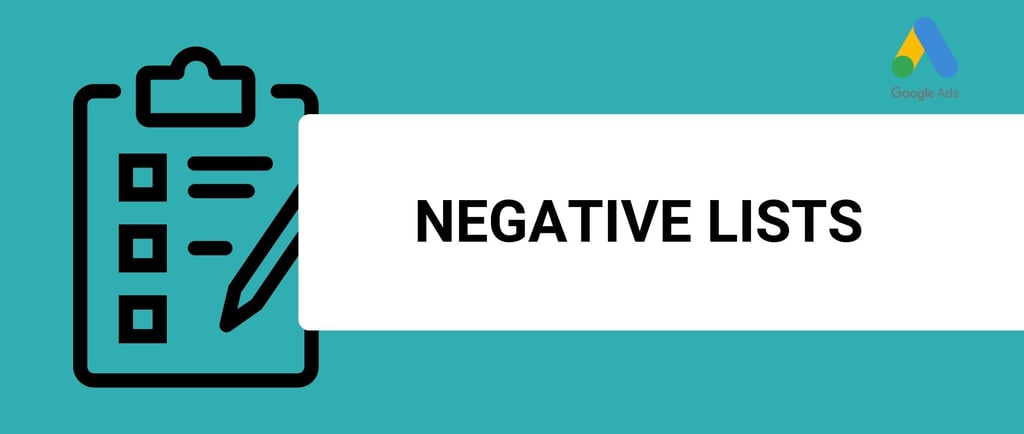How to Use Negative Keyword Lists to Refine Your Google Ads Traffic
Negative Keyword Lists are crucial for a successful Google Ads strategy. Discover how they save ad spend and boost ROI.
CAMPAIGN OPTIMIZATION
10/25/20244 min read


Imagine pouring your budget into a Google Ads campaign only to find clicks from users who aren’t even remotely interested in what you offer.
This scenario is all too common—and it’s where Negative Keyword Lists come into play.
By setting up a well-curated Negative Keyword List, you can stop paying for irrelevant traffic, stretch your budget, and boost conversions.
In this article, we’ll unpack the value of Negative Keyword Lists, address common challenges, and reveal how to build a list that filters out the noise so you can focus on driving real results.
Why You Need a Negative Keyword List
Negative Keyword Lists help you avoid wasting money on irrelevant searches. By excluding certain keywords, you ensure your ads won’t show up in searches that don’t align with your business. This strategy can lead to:
Higher Click-Through Rates (CTR): Only relevant users see your ads, increasing the chance they’ll engage.
Improved ROI: With fewer wasted clicks, your budget goes further, increasing your return on investment.
Better Ad Positioning: Focusing on qualified searches can boost your ad’s Quality Score, potentially improving ad placements.
Build Out Your Negative Lists Before Using Broad Match Keywords
If you’re planning to use broad match keywords in your campaigns, setting up a robust Negative Keyword List is crucial. Broad match keywords have the widest reach, meaning they can trigger your ads for a wide range of related search queries, including some that might be irrelevant to your business.
By preemptively building out your Negative Keyword List, you can filter out these irrelevant searches right from the start, keeping your ad spend focused on qualified traffic. This strategy helps prevent budget waste and improves the effectiveness of broad match keywords by ensuring they only reach users with a genuine interest in your offerings.
Pro Tip: Use Negative Keyword Lists to Save Budget on Seasonal Campaigns
For seasonal or promotional campaigns, a Negative Keyword List can prevent your ads from appearing for unrelated seasonal searches. For instance, if your brand doesn’t offer Black Friday deals, adding “Black Friday” as a negative keyword during November can help avoid clicks from deal-hunters who likely won’t convert.
The Essentials of Building a High-Impact Negative Keyword List
Here’s how to create a Negative Keyword List that works for you.
Identify Your Target and Non-Target Audience
Start by asking: “Who is my ad for?” and “Who is it not for?” For example, if you sell high-end headphones, your target audience might search for terms like “best quality headphones” or “luxury headphones,” while your non-target audience may search for “cheap headphones” or “budget headphones.” Exclude terms that don’t match your target audience’s intent.
Research Using Online Tools and Forums
Using tools like the Google Keyword Planner, look for search terms that don’t align with your product or service. Forums and communities are also great sources to discover keywords that lead to irrelevant clicks.
Common Negative Keywords to Consider
While each business will have unique needs, some common negative keywords apply across industries. Consider adding terms like “free,” “cheap,” “how-to,” or “DIY” if you’re offering premium services or products.
How to Manage Google Ads Negative Keyword Lists
Where to Apply Your Negative Keywords
You can apply Negative Keyword Lists at different campaign levels within Google Ads, but understanding where to add them can maximize their effectiveness.
Account Level: Ideal if you want a broad filter across all campaigns.
Campaign Level: Customize based on specific campaign goals and target audiences.
Ad Group Level: Great for fine-tuning on a more granular level.
When to Update Your Negative Keyword List
Set up a schedule to review and update your Negative Keyword List every 4–8 weeks. Monitor your campaign’s performance to identify additional terms that might be consuming your budget without conversions. A proactive approach keeps your list relevant and maximizes your ad spend.
How to Set Up a Negative Keyword List in Google Ads
Navigate to Tools & Settings in your Google Ads account.
Select Negative Keyword Lists under Shared Library.
Create Your List and add negative keywords relevant to your business.
Apply the List to your campaigns, choosing the levels that best suit your goals.
The Risks of Ignoring Negative Keywords
Skipping Negative Keyword Lists can result in budget drain, irrelevant traffic, and reduced ROI. By not filtering irrelevant searches, you risk attracting users who won’t convert, wasting valuable ad spend.
Common Questions: Answering Advertisers’ Top Concerns
Q: What if I exclude too many keywords and miss out on potential customers?
Start small and gradually build your Negative Keyword List based on performance insights. Regularly analyze your Search Terms report to see if your list needs adjustment.
Q: Can Negative Keyword Lists Improve My Quality Score?
Yes! By focusing on relevant clicks, your CTR improves, which can positively impact your Quality Score, leading to better ad positioning and lower costs per click.
Ready to Optimize? Take Control of Your Campaigns with a Negative Keyword Strategy
Negative Keyword Lists are a simple yet powerful tool that can transform your Google Ads campaigns. Don’t leave your budget to chance—take control of your ad spend and maximize your returns by filtering out unwanted traffic.
Start Advertising on Google Today
Want to learn more about optimizing your Google Ads campaigns?
Get in touch with us to start improving your ad performance with tailored strategies!
CONTACTS
incomewithdigitalmarketing@gmail.com
BOOK WITH US
SERVICES
Google Ads Assisstance
Google Analytics Setup
Google My Business Management
